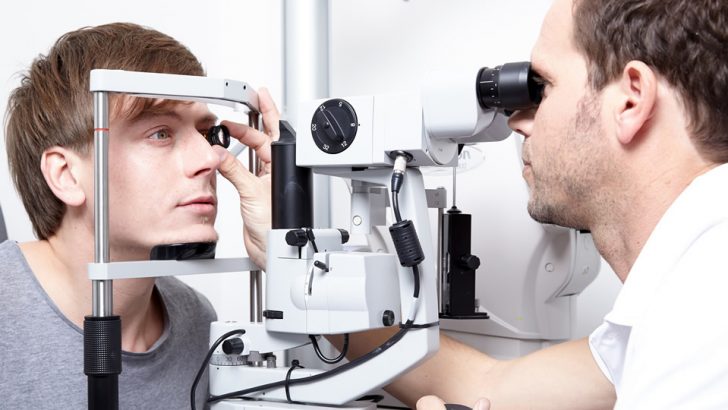Decline in vision is common from our midlife onwards and may prompt us to go and get our eyes checked out. Overall, it is estimated that 70% of sight loss in older adults is due to cataracts and refractive errors can that be corrected relatively easily.
Indeed, the first sign of visual change can occur from as early as the age of 40 when it is common to start to develop difficulty with reading due to presbyopia. This occurs due to stiffening of the lens in the eye preventing it from changing shape so as to focus light from close images. In mild cases, over the counter reading glasses work well though when more advanced, prescription lenses are likely to be better particularly if you already have spectacles.
Cataracts start to develop in most people after the age of 65, but will initially have little effect on your vision. They result when changes in protein in the lens leads to it becoming cloudy and blocking out light.
Unfortunately, over time cataracts become denser, increase in size and can ultimately cause blindness.
Hazy
Vision may be blurred or hazy and light from sunshine or lamps and headlights of cars at night may cause a glare. In addition there may be dimming of vision and need for brighter light for reading, fading or yellowing of colours, seeing halos around light and occasionally seeing double vision in one eye.
Cumulative damage from ultraviolet radiation from sunlight over the years (which may be avoided by wearing protective sunglasses) may contribute to cataracts. Several other factors appear to cause cataracts including medications like steroids and it is also more common in those with diabetes, a family history, previous eye injury and if you are very short-sighted or smoke.
Prescription lenses and adjusting light levels may help, though in general when vision is affected to the point of interfering with your quality of life or driving, surgery is recommended.
Cataract surgery is the one of the most frequently performed of all surgeries and is highly successful at restoring vision. It is done as a outpatient under local anaesthetic and involves replacing the lens with a new clear artificial one. There is usually mild discomfort for only a few days with full healing after eight weeks.
Glaucoma is a leading cause of irreversible visual loss with a sharply rising incidence with age, affecting about 5% of adults aged over 65. Indeed, the level of glaucoma is set to rise by 33% in Ireland over the next decade. It is due to an elevated pressure in the eye causing damage to the optic disc and nerves and leads to a peripheral loss of vision. In the majority of cases, there are no symptoms and it is slowly progressive, often only being picked up incidentally on a routine eye examination.
A formal diagnosis will be made by an ophthalmologist on finding an elevated intraocular pressure in association with damage to the optic nerve and/or loss of part of the peripheral visual fields.
As early detection is key in preventing further visual loss, routine eye testing should be considered every two years after the age of 40, particularly in those where there is a family history (20% cases).
Fortunately, glaucoma can be controlled using eye drops that are carefully titrated to lower eye pressure and prevent further damage. In more difficult to control cases, laser surgery can also be used.
Age related macular degeneration (ARMD) is a progressive condition that leads to central loss of vision. It’s incidence rises exponentially with age affecting up to 15% of those over 80.
It occurs when there is damage to the macula (central part of retina) on which visual images are projected.
It can cause a dramatic decline in visual acuity, visual distortions, blurred and central loss of vision and difficulty discerning colours. Unfortunately, the most common variant (dry type) has no treatment.
However, the ‘wet type’ which is more likely to cause a sudden change in vision and is due to leakage of fluid from blood vessels in the retina, can be treated by laser therapy and/or medications.
A supplement called lutein (similar to vitamin A) may also help slow down progression of ARMD.
Poor quality tears
Dry eye syndrome affects about 10% of adults with a prevalence of up to 30% in those aged over 65. It occurs when there is insufficient or poor quality tears that cannot provide adequate lubrication for the eyes.
This can give rise to a sensation of grittiness, stinging or burning, sensitivity to light, redness, watery eyes, eye fatigue, blurred vision and difficulty driving at night.
A reduction in tear production can occur simply with age but also with a variety of medical conditions. Sometimes, exposure to wind or dry air, eyelid problems and reduced blinking (due to prolonged periods of reading) can cause dry eyes by leading to excessive tear evaporation.
When symptoms are mild, over the counter artificial tears work well but investigations for other medical causes may occasionally be needed.
If you have ongoing visual symptoms or change in vision, make sure to get your eyes checked out!
Dr Kevin McCarroll is a Consultant Physician in Geriatric Medicine, St James’s Hospital, Dublin.


 Dr Kevin McCarroll
Dr Kevin McCarroll
